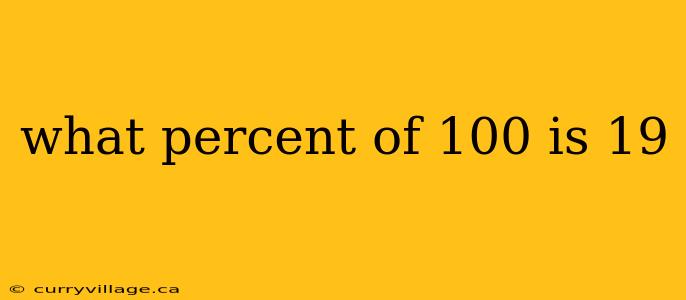Figuring out what percent a number represents of another is a fundamental math skill. This article will walk you through calculating what percent 19 is of 100, and explain the process so you can apply it to other percentage problems.
Understanding Percentages
A percentage is a fraction of 100. The symbol "%" represents "out of 100" or "per hundred". When we say "x% of y", we mean (x/100) * y. For example, 50% of 100 is (50/100) * 100 = 50.
Calculating the Percentage
To find what percent 19 is of 100, we can use a simple formula:
(Part / Whole) * 100% = Percentage
In this case:
- Part: 19
- Whole: 100
Let's plug the values into the formula:
(19 / 100) * 100% = 19%
Therefore, 19 is 19% of 100.
Another Approach: Using Proportions
You can also solve this using proportions. We can set up a proportion:
19/100 = x/100
Where 'x' represents the percentage we're trying to find. Notice that since the 'whole' is 100, the percentage is directly represented by the numerator. This simplifies the calculation considerably.
Practical Applications
Understanding percentage calculations is crucial in many real-world situations, including:
- Calculating discounts: Finding the final price after a percentage discount.
- Determining tax: Calculating the amount of sales tax on a purchase.
- Analyzing data: Interpreting statistical data represented as percentages.
- Financial planning: Tracking savings, investments, and expenses.
Conclusion
Calculating what percent 19 is of 100 is straightforward. The answer is simply 19%. Remember the formula (Part / Whole) * 100% and you'll be able to solve similar percentage problems with ease. Mastering percentage calculations is a valuable skill with wide-ranging applications in everyday life.
